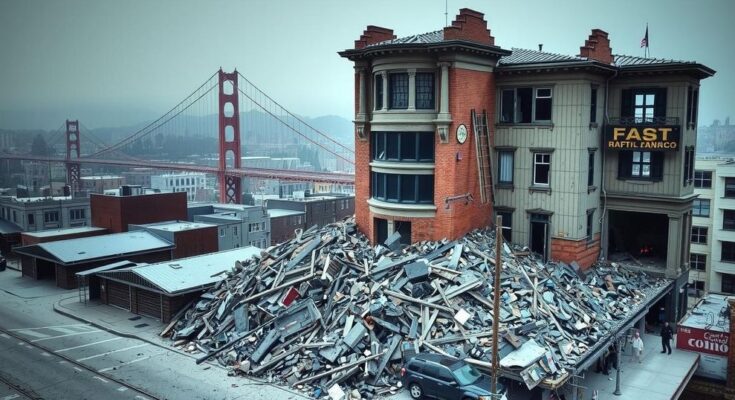On April 18, 1906, the San Francisco earthquake, measuring 7.9 in magnitude, formed as the San Andreas Fault slipped over 270 miles. The resultant tremors and subsequent fires devastated San Francisco, causing over 3,000 deaths, homelessness for 250,000, and loss of property valued at $350 million. The event spurred advancements in earthquake-resistant construction in the city’s reconstruction effort.
The San Francisco earthquake of 1906 occurred on April 18 at 5:12 AM with a massive magnitude of 7.9, resulting from a significant slip along the San Andreas Fault over a length of 270 miles (430 km). The earthquake’s tremors were experienced from Los Angeles to Coos Bay, Oregon, causing extensive destruction particularly in San Francisco and adjacent towns like San Jose and Santa Rosa. In the wake of the initial quake, a devastating fire engulfed the city, compounding the damage for four days and destroying around 28,000 buildings, with total property losses estimated at $350 million. Although initially, only 700 deaths were reported, recent estimates suggest fatalities exceeded 3,000, leaving approximately 250,000 individuals homeless. Despite the disaster, the city’s reconstruction was supported by local resilience and significant external aid, leading to improved designs that prioritized earthquake and fire resistance.
The 1906 San Francisco earthquake represents one of the most significant seismic events in American history. It serves as a pivotal case study in seismology, helping to shape our understanding of earthquake mechanics, particularly the elastic rebound theory, which explains the release of built-up stress in geological faults. San Francisco’s recovery from this disaster not only highlighted the city’s determination but also marked a transformation in urban planning and building practices aimed at mitigating future earthquake damage.
In summary, the 1906 San Francisco earthquake was a catastrophic event that reshaped the city and advanced our understanding of earthquakes. The combination of ground shaking and subsequent fires resulted in unprecedented destruction, yet it also stimulated significant advancements in urban planning and building techniques. The experiences from this earthquake continue to influence seismic safety regulations and practices today, reflecting enduring lessons learned from the disaster.
Original Source: www.britannica.com




